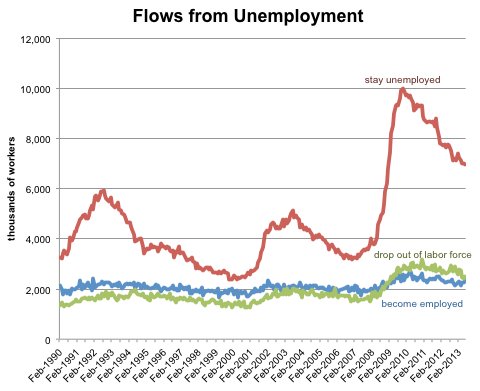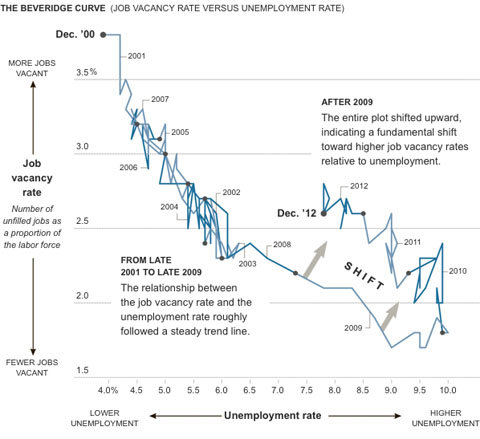The unemployment rate, which comes from a different survey, ticked down to 7.4 percent as people got jobs or dropped out of the labor force.
The job gains reported by the Labor Department on Friday were concentrated in retail, food services, financial activities and wholesale trade. The manufacturing sector gained 6,000 jobs; government employment stayed basically flat.
July represented the 34th-straight month of job creation, but the latest pace of employment gains is still not on track to absorb the backlog of unemployed workers anytime soon. At the average rate of job growth seen so far this year, it would take more than seven years to close the so-called jobs gap left by the recession, according to the Hamilton Project at the Brookings Institution.
Other indicators disappointed, too, with both average hourly wages and the length of the private-sector workweek shrinking modestly in July.
“I honestly didn’t think it would be this hard,” said Keith Aiken, 38, who moved into a homeless shelter in Greensboro, N.C., about a month ago. His employer of more than a decade, a group home for people with disabilities, shut down last August, and he has been looking for work ever since.
After state officials ended North Carolina’s eligibility for federal unemployment benefits last month, Mr. Aiken’s benefits stopped and he was no longer able to pay his rent.
“Hopefully something will come open pretty soon,” he said, noting that he is looking into contract labor in Iraq or Afghanistan. “I like to think I’m down but not quite out yet.”
The outlook for workers like Mr. Aiken is unclear.
Some economists are hopeful that the pace of hiring will pick up once Congress’s latest across-the-board budget cuts have worked their way through the system at the end of the fiscal year on Sept. 30. But battles in Washington over the debt ceiling and further austerity measures mean that the drag from a shrinking government could continue into next year and beyond.
“Whether there’s less fiscal drag, more fiscal drag, or a train wreck, we still really don’t know,” said Joshua Shapiro, chief United States economist at MFR.
Analysts are also questioning the disconnect between job growth and other measures of the country’s economic health. The current rate of job creation would typically coincide with faster-growing economic output.
But the country’s gross domestic product, a broad measure of the production of goods and services, grew at a relatively tepid annual rate of 1.7 percent in the second quarter of this year and 1.1 percent in the first quarter, much less than would be predicted from recent hiring trends.
Trends in output and job growth seem unlikely to stay decoupled for too long, some economists say, in which case output should start to pick up, or job growth should start to slow, or both.
“I think with the economy showing 1 percent growth on average over the last three quarters you’re locked into 150,000 jobs per month for the rest of this year,” said Steven Ricchiuto, chief United States economist at Mizuho Securities.
One other possible explanation for the seemingly incongruous trends in job and output growth has to do with the mix of jobs being created.
“The composition of job growth has not been particularly great,” Mr. Shapiro said. “It’s a lot of temp services, retail, food services, health care. With low-end jobs contributing more than half the growth, the income generated would be not that great, and you wouldn’t be expecting it to drive strong consumer spending.”
Even so, the economy appears to be healing, at least from the perspective of the Federal Reserve.
Given the relatively strong headline numbers for job growth over the last few months, many Wall Street analysts are expecting the central bank to announce that it will start pulling back on its asset purchases in September. A statement the Fed released on Wednesday this week shed little light on the timing for this decision, but Chairman Ben S. Bernanke has said the Fed would most likely begin to taper its asset purchases later this year.

Article source: http://www.nytimes.com/2013/08/03/business/economy/us-adds-162000-jobs-less-than-expected.html?partner=rss&emc=rss





